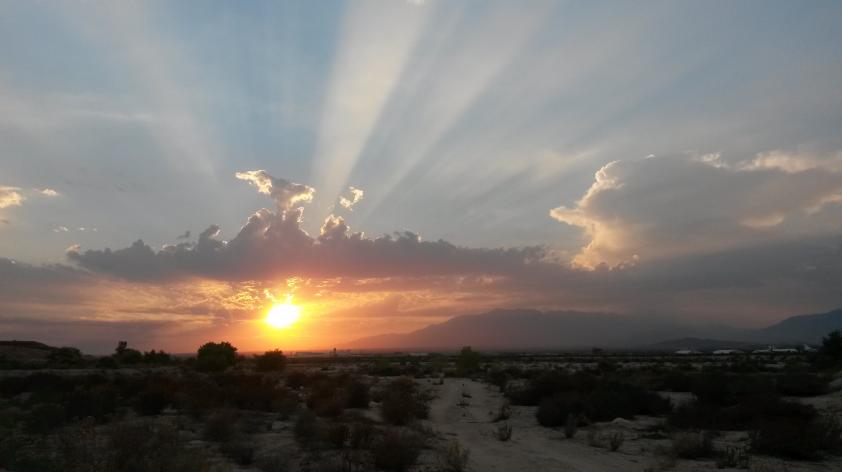
Night of the Experiment
I study the effects of artificial light at night on San Bernardino kangaroo rat behavior. This is important because artificial light at night is known to change both animal physiology and behavior. It is particularly important for animals such as kangaroo rats that are awake all night. Nocturnal small mammals in general have evolved to be active at night as a way of avoiding predation. They are particularly susceptible to nocturnal raptors such as owls. If there is more light at night (including natural moonlight) they perceive a threat and are more vulnerable to predation from owls. Our research group is testing how artificial light changes their foraging behavior (how much food they collect) with an experiment. And I will tell you a bit about what one night of our experiment is like.
Afternoon
First of all, before we even get out into the field we need to weigh out individual batches of seeds. For our experiment we lay out known amounts (8g) of seed onto trays and come back later in the early morning when it is still dark, to see how much the kangaroo rats have taken. We run three sites at a time, which each have 30 trays so we need 90 bags of pre-weighed out seed! As you can imagine this takes a long time to weigh out. We use a balance and weigh the seed at our field station. I joke with my artist friends that one of the things that art and science have in common is precise and monotonous tasks. But it will be worth it in the end!
Dusk
Once that is good to go, we drive over to our field site and set up the experiment. We set up the experiment in the evening hours so that we can start it as soon as it gets dark. We walk around laying out the 8g of seed at each tray. Retaining the plastic snack baggy to use to pick up the seed in the morning and setting up the lights for our light treatment experiment. During this time we sometimes hear the coyotes yipping and howling. When it gets dark we turn on the lights and go back to the field station to wait for the kangaroo rats to forage from the trays.
Night
After about a four hour night time nap we drive back to the site. Being a field biologist is all about problem solving. Sometimes it feels like we have seen it all, but if you let down your guard you will always discover a problem you might not have thought of. When we return to the site we hope to find the light still on. But in the past we have returned to the lights which have failed due to the actions of rabbits. At one point rabbits chewed through our electrical wires. Now we know to tape the wires up on to the pole and elevate the power supply off the ground. Luckily this time the lights are on as we return to the site. We walk around and collect the seed trays and turn off the lights. Then we sieve the seeds from the soil on the trays and retain the seeds for future weighing. From this we can tell how much food was taken from each tray. The idea being that more food left the more dangerous they perceived the tray. In the end we finish sieving the trays just as it is becoming light. It’s hard work shifting our schedules and working at night or even just waking up at all hours. But we only run the experiments for a few months out of the year. And it is not so bad when you get to see both the sunset and the sun rise all in a day’s work.













